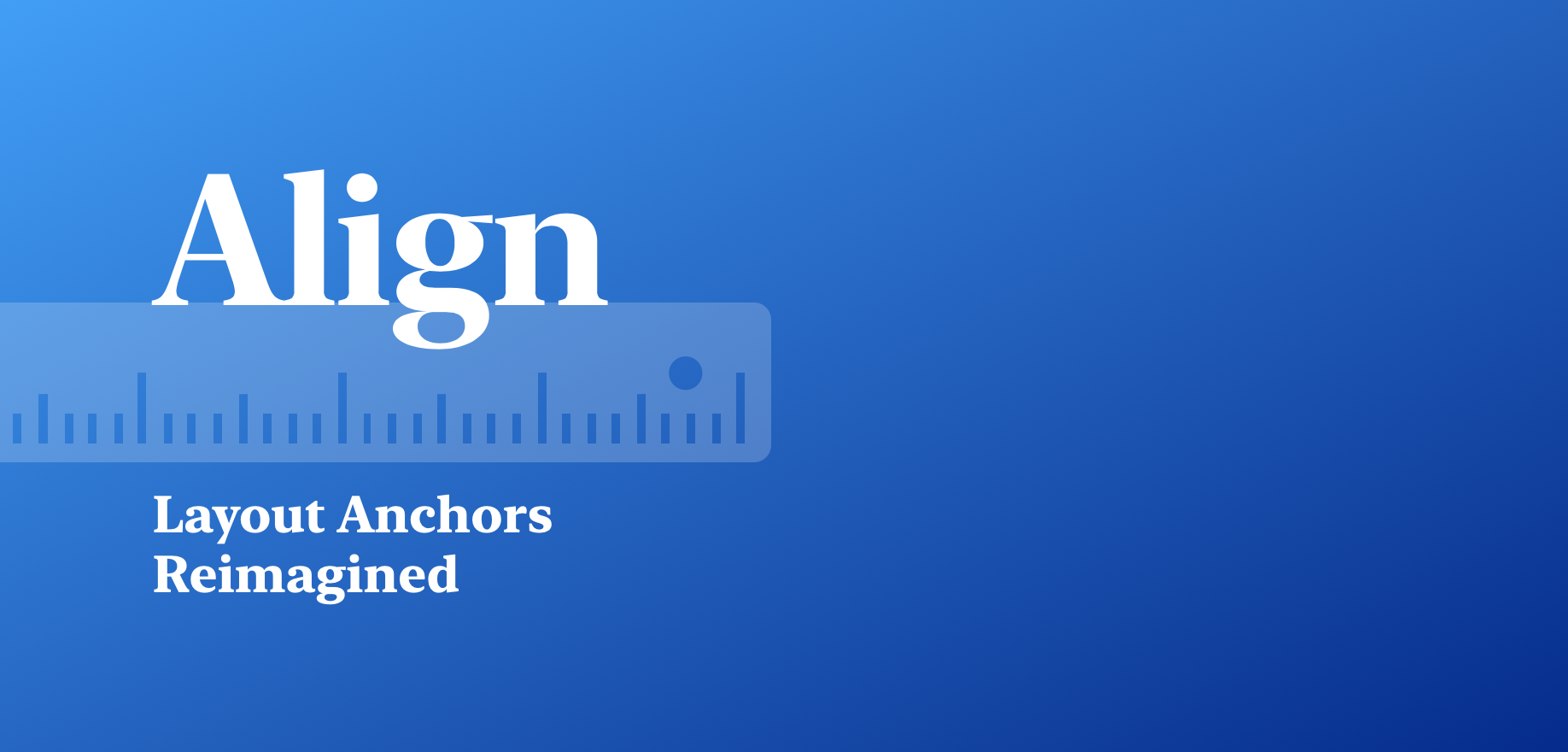FormationLayout
Documentation
FormationLayout is the top level layout class for one root view.
FormationLayouttakes aUIViewas itsrootView.translatesAutoresizingMaskIntoConstraintsofrootViewis not set to false by default but can be set in constructor.translatesAutoresizingMaskIntoConstraintsof subviews will be set to false automaticly.- Subviews with no
superViewwill be added torootViewautomaticly.
demo { canvas, icon in
FormationLayout(rootView: canvas)[icon].center(equalTo: canvas)
}
Anchors
View anchors: left, right, top, bottom, leading, trailing, width, height, centerX, centerY, lastBaseline, firstBaseline, centerXWithinMargins, centerYWithinMargins
layout[view].anchor(equalTo: view2, multiplyBy: multiplier, plus: constant)- view.anchor == view2.anchor * multiplier + constant
layout[view].anchor(equalTo: anchor2, of: view2, multiplyBy: multiplier, minus: constant)- view.anchor == view2.anchor2 * multiplier - constant
layout[view].anchor(greaterThanOrEqualTo: view2)- view.anchor >= view2.anchor
layout[view].anchor(lessThanOrEqualTo: value)(Only width and height)- view.anchor <= value
demo { canvas, icon1, icon2, icon3 in
let layout = FormationLayout(rootView: canvas)
layout[icon1].top(equalTo: canvas, plus: 10).leading(equalTo: canvas, plus: 20)
layout[icon2].top(equalTo: icon1).leading(equalTo: .trailing, of: icon1, plus: 10)
layout[icon3].bottom(equalTo: canvas, minus: 10).leading(equalTo: icon1, multiplyBy: 2)
}
Helpers
- aspectRatio:
width:height - size: width & height
- center: centerX & centerY
demo { canvas, icon1, icon2, icon3 in
let layout = FormationLayout(rootView: canvas)
layout[icon1].aspectRatio(equalTo: 1.5).width(equalTo: 30)
layout[icon2].size(equalTo: 30).center(equalTo: canvas, multiplyBy: 0.8)
layout[icon3].size(equalTo: icon2, minus: 10).center(equalTo: icon2, plus: 30)
}
Pin
layout[view].pin(to: canvas) will set
- view.top == canvas.top
- view.bottom == canvas.bottom
- view.left == canvas.left
- view.right == canvas.right
layout[view].pin(to: canvas, margin: 10) will set
- view.top == canvas.top + 10
- view.bottom == canvas.bottom - 10
- view.left == canvas.left + 10
- view.right == canvas.right - 10
demo { canvas, icon1, icon2, icon3 in
let layout = FormationLayout(rootView: canvas)
layout[icon1].pin(to: canvas, edgesWithMargin: [.top: 10, .leading: 3])
layout[icon2].pin(to: canvas, margin: 30)
layout[icon3].pin(to: canvas, edges: [.topBottom, .trailing], margin: 3)
}
Abreast
- layout[logo].below(topLayoutGuide, gap: 10)
- logo.top == topLayoutGuide.bottom + 10
- layout[copyright].above(bottomLayoutGuide, gap: 10)
- copyright.bottom == bottomLayoutGuide.top - 10
demo { canvas, icon1, icon2, icon3 in
let layout = FormationLayout(rootView: canvas)
layout[icon1].center(equalTo: canvas)
layout[icon2].before(icon1).above(icon1, gap: 5)
layout[icon3].after(icon1).below(icon1, gap: 5)
}
Group
layout.group(view1, view2) will create same constraints for
- layout[view1]
- layout[view2]
demo { canvas, icon1, icon2, icon3 in
let layout = FormationLayout(rootView: canvas)
layout.group(icon1, icon2, icon3).centerY(equalTo: canvas)
layout[icon1].leading(equalTo: canvas, plus: 5)
layout[icon2].centerX(equalTo: canvas)
layout[icon3].trailing(equalTo: canvas, minus: 5)
}
Condition
layout.when() creates constraints for one condition and its not creates constrains for otherwise.
demo { canvas, icon in
var isLoggedIn = true
let layout = FormationLayout(rootView: canvas)
let loggedInLayout = layout.when { isLoggedIn }
layout[icon].centerX(equalTo: canvas)
loggedInLayout[icon].top(equalTo: canvas, plus: 10)
loggedInLayout.not[icon].bottom(equalTo: canvas, minus: 10)
layout.update()
}
isLoggedIn = false
Priority
All constraints have UILayoutPriorityRequired by default.
demo { canvas, icon in
let layout = FormationLayout(rootView: canvas)
layout[icon].centerX(equalTo: canvas).size(equalTo: 20)
.centerY(equalTo: canvas, at: UILayoutPriorityDefaultLow) // Try UILayoutPriorityRequired
.bottom(equalTo: canvas, at: UILayoutPriorityDefaultHigh)
}
UILayoutPriorityRequired:
Playground
- Open Documentation/Doc.xcworkspace.
- Build the FormationLayout-iOS scheme (⌘+B).
- Open Doc playground in the Project navigator.
- Click "Show Result" button at the most right side of each
demoline.
Install
CocoaPods
pod 'FormationLayout', '~> 0.8.5'
Carthage
github "evan-liu/FormationLayout" >= 0.8.5






















